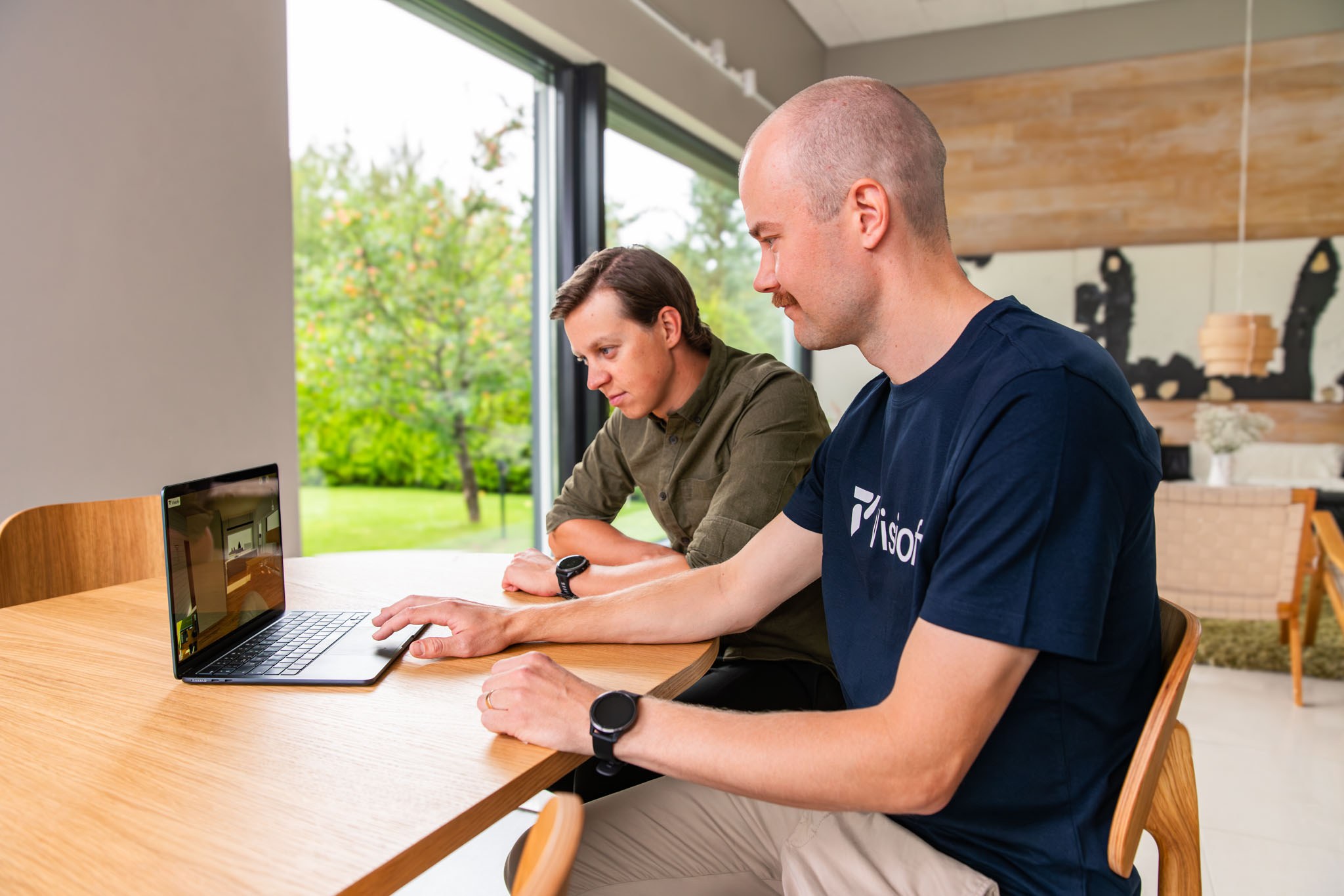
How to Make Your SketchUp Models Look Perfect in Visiofy
Overview: Prep your SketchUp Model for Visiofy
To get the best results in Visiofy, make sure your model is prepared correctly before export. Models that flicker, show black textures, or have missing surfaces usually need a few quick fixes in SketchUp.
-
Check out the instructions for optimal export prep.
-
Export your model following the steps below.
-
Upload your file at app.visiofy.com.
-
Experience your space in Visiofy — on desktop, mobile browser, or your Meta Quest headset.
If you’ve imported a SketchUp model into Visiofy and noticed that something looks a little off — you’re not alone. The good news is, it’s not a problem with Visiofy itself, but with how the model was built in SketchUp. With just a few simple fixes, your designs will look exactly the way you intended. Here's a quick model prep checklist:
1. Check Doors and Accessibility
In Visiofy, you can only enter rooms that have open doors on Sketchup. If a door is modeled closed, you won’t be able to walk through it. Before exporting, open all doors to spaces you want to make accessible.
2. Avoid Parallel Faces (Z-Fighting)
When two surfaces sit directly on top of each other, Visiofy struggles to decide which one to show — causing flickering or z-fighting.
Try to avoid overlapping or duplicate geometry. You may need to test-upload your model to Visiofy to identify problem areas, then fix and re-upload.

3. Limit Large Flat Planes
Visiofy automatically limits the total surface area of experiences for performance reasons.
Avoid modeling large, empty surfaces like flat ground planes — this leaves more capacity for the detailed, interesting parts of your design.

4. Fix Face Orientation
Before exporting, make sure that all faces in your model are oriented correctly — this ensures that Visiofy renders your model accurately.
In SketchUp, each surface has a front (white) and a back (blue). The front of every face should point outward, and the back should face inward. This process is called checking the normals. You can learn more from SketchUp's YouTube tutorial below:
To verify your face orientation:
-
Go to View > Face Style > Monochrome — this allows you to see which sides are facing the wrong way (in monochrome mode, face fronts are white and face backs are dark gray by defult)
-
Any dark gray surfaces visible on the outside of your model indicate reversed faces.
-
To fix them, right-click the surface and select Reverse Faces.
For complex models, you can use the Solid Inspector 2 extension to automatically detect and repair reversed faces — a faster way to prepare your model for export
Tips:
💡Intersecting geometry doesn’t usually break your model, but it can look messy and upleasant to the eye. Whenever possible, adjust intersecting parts to create cleaner, more visually appealing results.
💡For glass to appear correctly from both sides in Visiofy, you’ll need to model two separate panes — one facing inward and one facing outward.
Once Done, Export and Upload
Once your model is clean and optimized:
-
Export it in the GLB format following Visiofy’s SketchUp export steps.
-
Upload it to app.visiofy.com.
-
Experience your design directly in your browser or with a Meta Quest headset.
FAQ: Optimizing Your SketchUp Model for Visiofy
Why does my SketchUp model look wrong in Visiofy?
Usually because of missing floors, overlapping geometry, incorrect face orientation, or broken material links. Adjusting these in SketchUp before export fixes most issues.
Why are some surfaces flickering or flashing?
That’s caused by overlapping surfaces (z-fighting). Make sure no two surfaces occupy the same space in your model.
Why should I optimize my 3D model before uploading it to Visiofy?
Optimizing reduces file size and complexity, ensuring that your virtual model loads quickly, runs smoothly, and provides the best experience for clients.
Why can’t I walk into certain rooms?
Closed doors block navigation. When prepping your model in SketchUp, open any doors you want to make accessible before exporting your model.
Why are some textures missing or black?
Make sure all materials are linked and available in SketchUp before export. Missing texture files lead to black surfaces in Visiofy.
Why do some surfaces disappear?
Visiofy only renders the front face of each surface. Check and correct face orientation in SketchUp.
How can I make glass visible from both sides?
Model two separate glass panes — one facing inward, one outward — so both sides render properly.


